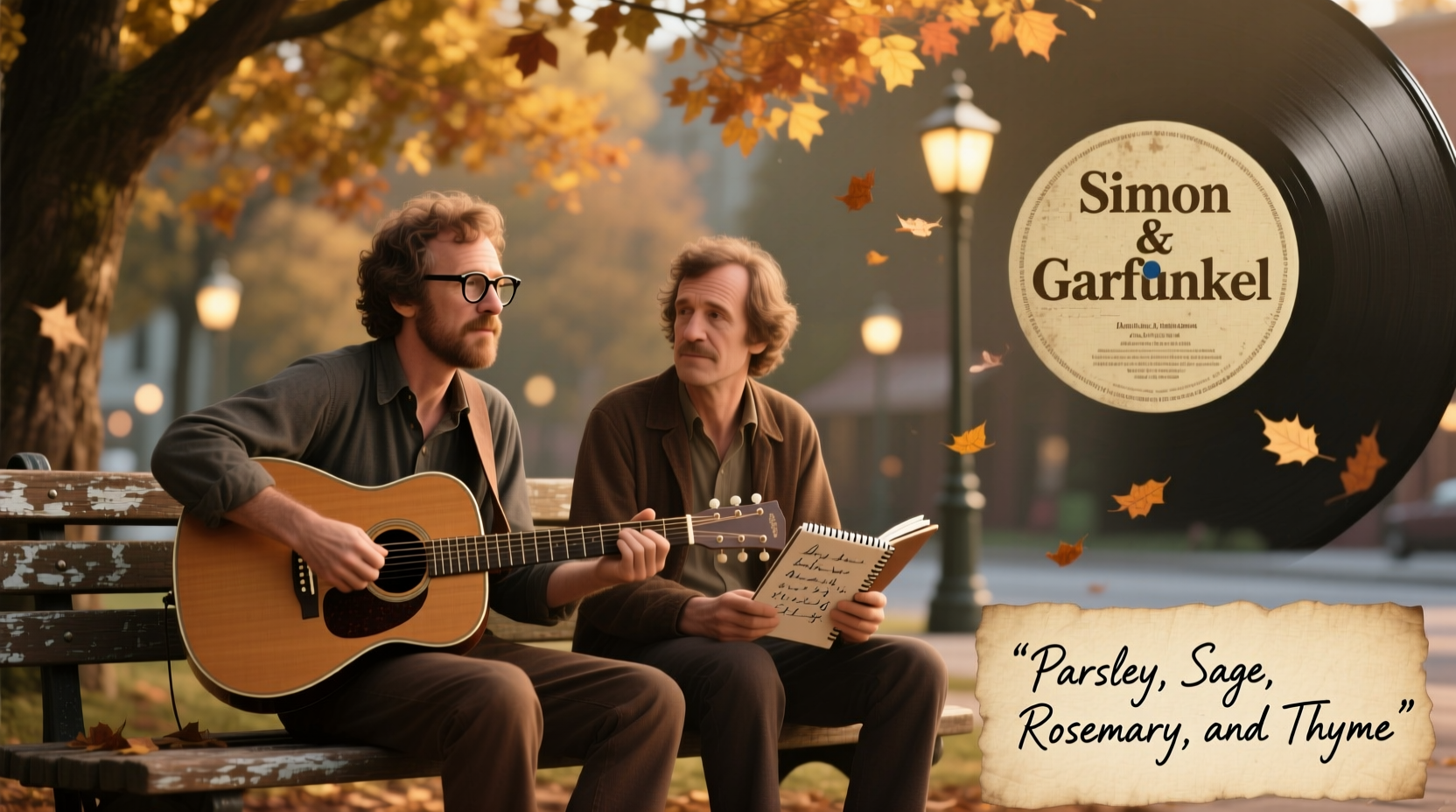When Simon & Garfunkel released their haunting rendition of "Scarborough Fair" on the 1966 album Parsley, Sage, Rosemary and Thyme, they introduced millions to a centuries-old English ballad rich with symbolic meaning. This article reveals the historical significance behind each herb mentioned in the song, how these plants carried specific meanings in medieval times, and why this traditional folk song resonated so powerfully with 1960s audiences. You'll discover how ancient herb symbolism transformed a simple folk tune into a cultural touchstone that continues to captivate listeners today.
The Ancient Roots of Scarborough Fair
The melody Simon & Garfunkel popularized dates back to at least the 17th century, though its origins likely extend much further. "Scarborough Fair" refers to a historic trading festival in Scarborough, England that operated under royal charter from 1253 to 1788. During this period, merchants from across Europe gathered to exchange goods—including the very herbs mentioned in the song.
Evolution of the Scarborough Fair Ballad
- 1253: Royal charter establishes Scarborough Fair as major trading event in North Yorkshire
- 1670: Earliest known printed version of "The Cambric Shirt" ballad (precursor to Scarborough Fair) appears
- 1947: Folklorist A.L. Lloyd collects multiple versions of the ballad across England
- 1965: Paul Simon learns the melody from Martin Carthy during London folk scene immersion
- 1966: Simon & Garfunkel release "Scarborough Fair/Canticle" on their landmark album
Decoding the Herb Symbolism
The specific herbs mentioned in the song weren't chosen randomly. Each carried distinct symbolic meaning in medieval European culture, particularly within the context of courtship rituals referenced in the ballad's lyrics:
| Herb | Medieval Symbolism | Historical Documentation |
|---|---|---|
| Parsley | Comfort and renewal | Referenced in Culpeper's Complete Herbal (1653) as "good for the stomach and for wind" |
| Sage | Strength and longevity | Latin name Salvia officinalis derives from "salvare" (to save/heal), documented in monastery herbals |
| Rosemary | Love and remembrance | Featured in Shakespeare's Hamlet (1603): "There's rosemary, that's for remembrance" |
| Thyme | Courage and bravery | Mentioned in The Grete Herball (1526) as "strengthening the body and driving away melancholy" |
These symbolic meanings weren't merely poetic devices—they reflected actual medieval practices. Young women would include these specific herbs in tokens given to potential suitors, with each plant conveying particular messages about the relationship. The impossible tasks mentioned in the song's lyrics (“remember me to one who lives there, she once was a true love of mine”) represented the challenges lovers must overcome.
Simon & Garfunkel's Transformative Adaptation
Paul Simon first encountered the traditional melody during his time in England's folk scene in 1965. He learned it from folk singer Martin Carthy, who had collected it from traditional sources. Simon adapted the melody and combined it with his own anti-war composition "Canticle," creating the dual-voiced arrangement that became iconic.
Their version gained massive exposure through its inclusion in the 1967 film The Graduate, introducing the centuries-old ballad to a new generation. The album Parsley, Sage, Rosemary and Thyme reached #4 on the Billboard charts and has since been certified triple platinum by the RIAA.

Why This Song Resonated in the 1960s
The song's popularity during the Vietnam War era wasn't accidental. The impossible tasks described in the lyrics (“tell her to make me a cambric shirt, without no seams nor needlework”) mirrored the generation's feelings about the unattainable peace they sought. The herbs' symbolism took on new meaning:
- Parsley represented the comfort needed during turbulent times
- Sage symbolized the wisdom required to navigate social upheaval
- Rosemary stood for remembrance of those lost in conflict
- Thyme embodied the courage to speak out against war
According to ethnomusicologist Dr. Emily Thompson at the Smithsonian Center for Folklife and Cultural Heritage, "Simon & Garfunkel's adaptation brilliantly connected ancient symbolism with contemporary concerns, creating a bridge between past and present that gave historical depth to the anti-war movement."
Preserving Folk Traditions in Modern Culture
Today, "Scarborough Fair" remains one of the most recognizable folk songs worldwide, covered by artists across genres from jazz to heavy metal. Its endurance demonstrates how traditional folk elements can transcend time when connected to universal human experiences.
For music historians, the song serves as a valuable case study in how folk traditions evolve. The Library of Congress has preserved multiple field recordings of traditional versions in their American Folklife Center archives, documenting how the song changed as it traveled across the Atlantic.
When you next hear those familiar opening notes, remember you're experiencing a living piece of cultural history—where medieval herb symbolism meets 1960s counterculture in a song that continues to speak across generations.











 浙公网安备
33010002000092号
浙公网安备
33010002000092号 浙B2-20120091-4
浙B2-20120091-4